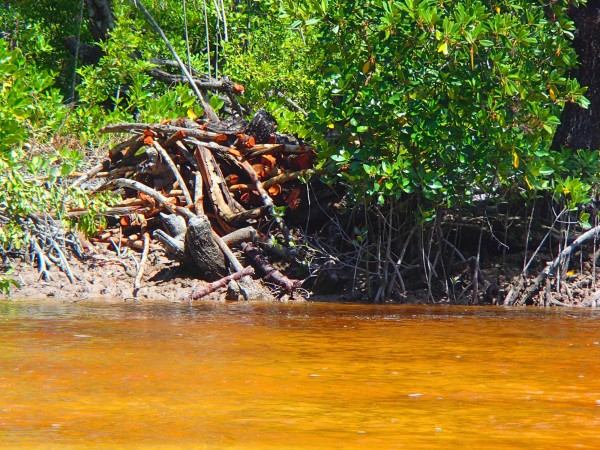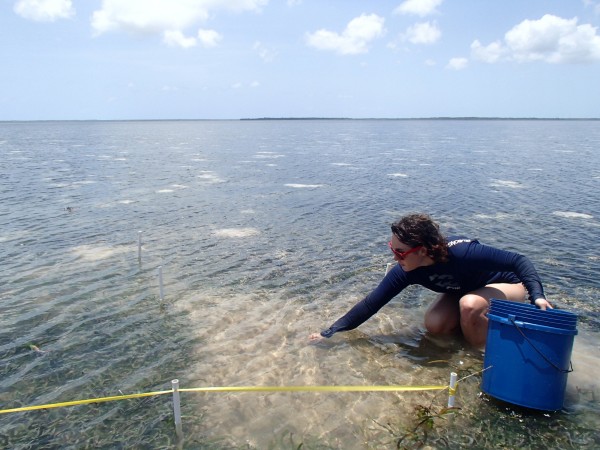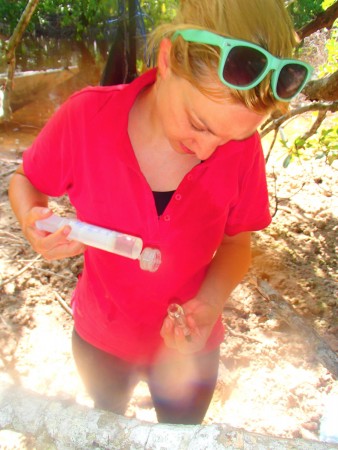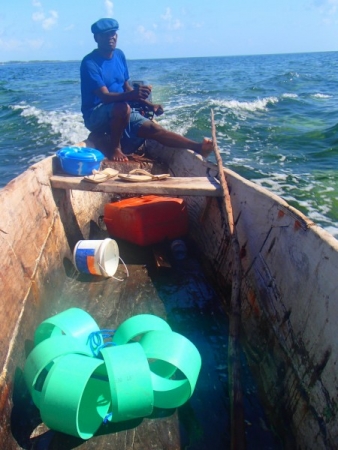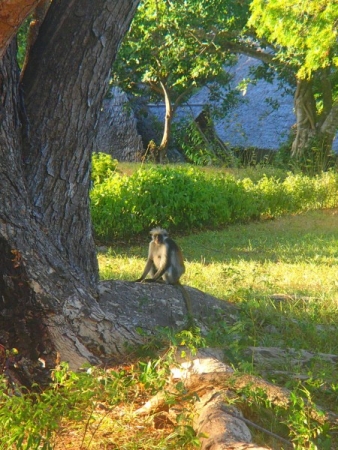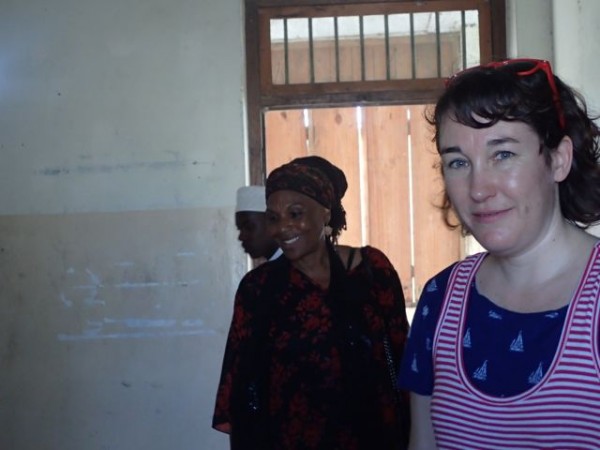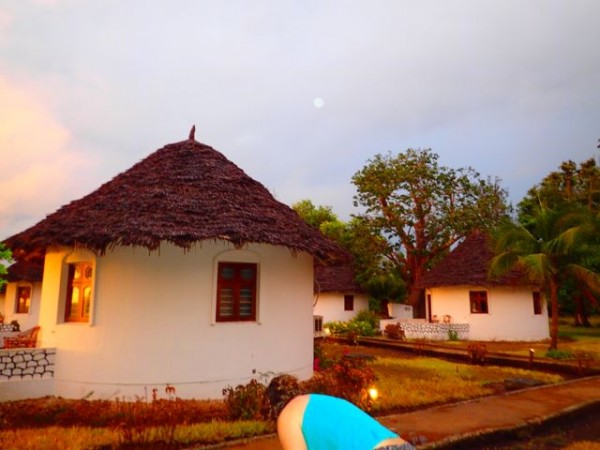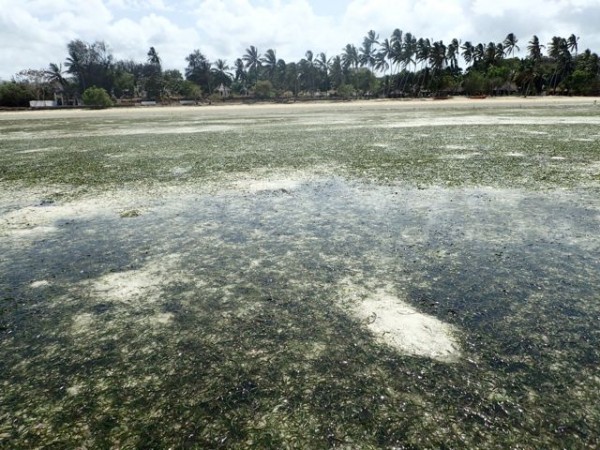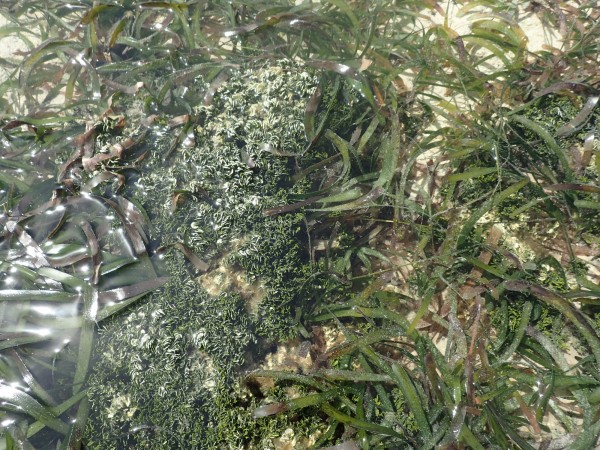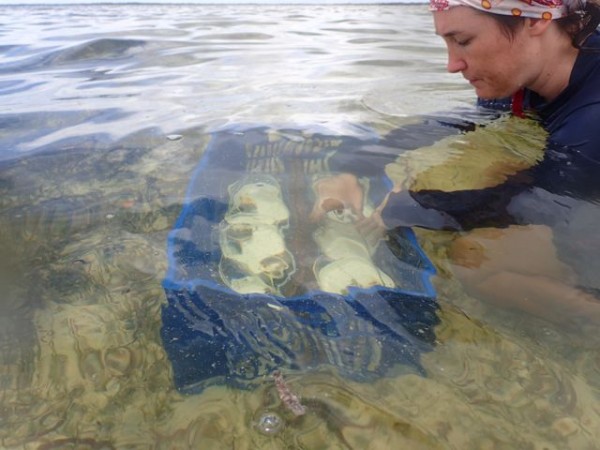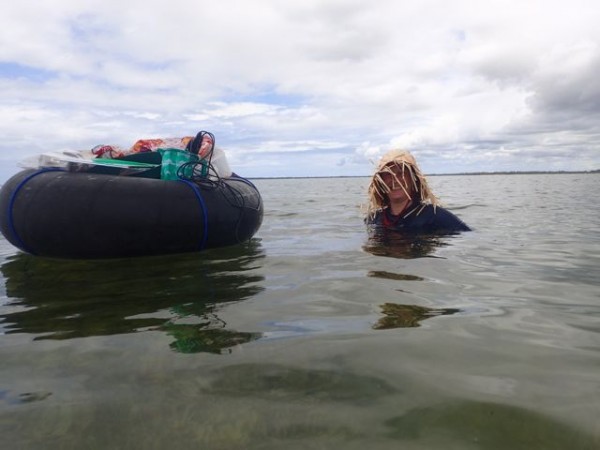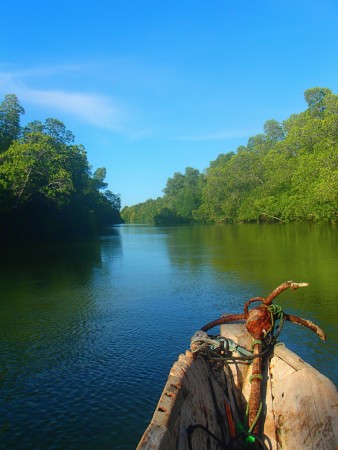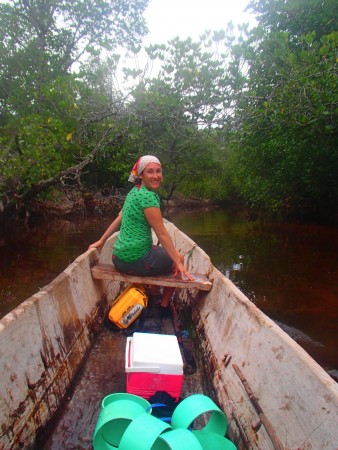Sansibar 8.3. - 9.4.15 | Photo: ZMT
Dieser Text ist zur Zeit nur auf Englisch verfügbar...
This trip to Zanzibar involves two different projects funded by the ZMT. The first regards looking at connections between mangroves forests, seagrass beds and algae and is entitled: "The relationship between seawater carbon chemistry (DIC) outwelling from mangrove forests and the potential for buffering against ocean acidification in the interlinked mangrove and seagrass ecosystems of tropical coastal Chwaka Bay, Zanzibar."
The main persons on this project are Gita Narayan (PI), Lucy Gwen Gillis (co-PI) and Fay Belshe. The second project is entitled "Nutrient dynamics and connectivity of mangrove forests, seagrass beds and coral reefs in Chwaka Bay". On this project Lucy Gwen Gillis (PI), Sönke Hohn (co-PI) and Fay Belshe are the principle participants.
30.3.15
Chwaka Bay
The rainy season started in the middle of our sampling campaign (day 10). The seasons in Zanzibar change from one day to the next, for example on a Tuesday one will have 8 hours of sunshine, come the rainy season on the Wednesday it turns to eight hours of rain! Every day Fay and I are up at 06.00 am to scan the skies for rain, however this does not always help as the rain can come (and go) quickly! Taking electronic equipment out to the mangrove forest and seagrass bed can be tricky, but Fay and I are well adapted to tropical climates. But keeping the equipment safe and dry usually means that Fay and I are mostly wet!
Travelling up the mangrove forest with our indispensible boat driver Mcha is generally a magical experience. Further away from the mouth the mangrove is very peaceful with the channel becoming thinner and the trees growing over our heads. Unfortunately the mangrove forest we are working in is being cut down at an alarming rate, making it very sad to see large patches without any trees. Many of the people who cut down the trees, have no other employment and need money to feed their family. But Fay and I wonder if the Chwaka Bay mangrove forest will still be here when we next come to visit.
Next week we will be leaving Zanzibar. Time here goes very fast, the early morning sample collection and late night sample processing means we work hard but sleep harder! We have been lucky (even with the rain) to have been able to gather all the data and extras, which means a very successful research trip. In addition Fay and I have had the time to do morning Yoga outside at sunrise, something we cannot do in Bremen! We have already started preparing the samples, we have to make sure they are stable and we have the correct permits to bring them out of the country. On the last day Fay will collect seagrass samples to plant in the MAREE, which will be used in several other experiments.
Lucy Gwen Gillis, WG Mangrove Ecology
21.3.15
Chwaka Bay
It has been hot, hot, hot (32°C) in Zanzibar since I arrived on the 21st of February. I arrived at the tail-end of the kaskazi (in Swahili) or little (NE) monsoon and in anticipation of the SW Monsoon (big rainy season) so that I could start nutrient sampling from Stone Town to the reefs on the western side of Zanzibar. The pace of life here has been slow in the heat as people gather around “biggie” tree or at Fodhani Gardens along the Stone Town waterfront in the evenings, to eat jackfruit, drink cane juice and cool off. The tourists are packing their bags to leave, hotels are closing down for the season and Zanzibaris are awaiting the rains. They say the rains will come on the 21st of March, the autumn equinox 6° South of the Equator. There is a general lethargy in the air…the casual jambo, mambo from the local tourist shop owners but not the pressure to “just come in to take a look”. The atmosphere in Stone Town seems quiet and relaxed and moving very pole pole (slowly, slowly).
In the meantime, our postgrade project in Chwaka Bay on the eastern side of Zanzibar Island has been underway now for nearly 2 weeks. Situated a 15-minute walk from Chwaka Bay Village, we are a little isolated. As Fay and Lucy trudge off to the mangroves each day, I wander down from our bungalow to the seagrass meadow in front of the Chwaka Bay Hotel to take diurnal (every 3 hours) alkalinity samples and measurements in the Halimeda and Thalassia hemprichii seagrass plots. As the tide comes in, the water temperature is an uncomfortable 34°C. We wonder how the Halimeda in our experimental plots are coping. But since they are the dominant macroalgae in the Bay they must be well adapted.
On day 10 we wake up to a downpour. Like clockwork, By March 20th the SW monsoon has well and truly arrived. Fay and Lucy eye the sky as they sit on the beach to wait for Mcha the boat driver to arrive and carry them off into the mangroves…good thing it is the last day of sampling in the mangroves (hopefully). Tomorrow we will be in the seagrass meadow to carry out light and dark incubations of 27 individual Halimeda macroalga. We hope the rains stay away for this one day. It is the New Moon and the tides are quite extreme in shallow Chwaka Bay. The thick cloud cover and rains throughout the day bring some relief from the heat.
Gita Narayan, WG Geoecology and Carbonate Sedimentology
16.3.15
Chwaka Bay
I arrived in Zanzibar airport in the late evening were Fay met me from customs and took me to our accommodation at Noreen’s. After such a long travelling day it was fantastic to finally go to bed. It was also nice to be arriving from winter Bremen into the tropics, and I was looking forward to the sunshine. The next day we spent packing the large taxi (we had a lot of equipment) before we headed straight away to Chwaka Bay on the East side of the island. Fay and Gita have already spent some time in Stonetown and were looking forward to staying in this calm area away from the city. We were staying at a small house, which was right on the beach, allowing us easy access to some of our monitoring sites. On our first breakfast a family of monkey’s, including babies who seemed quite unperturbed by our presence, greeted us!
We chose this bay for our study because it had three connective ecosystems; mangrove forests, seagrass beds and coral reefs, which are perfect for our scientific questions. However the coral reef is almost completely degraded. But the mangrove forests and seagrass beds are in great shape, these ecosystem engineers are even colonizing new areas. Our first day was spent preparing equipment, buying supplies and organizing boat drivers. Our boat driver for the trip is Mcha, who has been working for IMS for the last 10 years helping to collect data on the bay. He is an excellent boat driver and understood exactly what we wanted to achieve and collect on this trip. We also set-up the marine lab were we could process all the sediment, water and algae samples we collected.
On the second day, Gita and Fay investigated the seagrass site where they hoped to complete their experiment, this is directly in front of our house. Which is great because at certain times they will have to do night sampling! They also collected algae, which they will use in incubations. The algae in Chwaka Bay are like another ecosystem. I have only studied seagrasses, corals and mangroves but the biodiversity of algae that I have seen in the bay is something special, I never knew that so many different and beautiful types of algae existed.
In the next few days Fay and I hope to start two monitoring programs, the first investigating organic material fluxes in the bay. For this we hope to model these fluxes using a Delft3D model with Sönke Hohn. The second program is to establish carbon fluxes from mangrove forests to seagrass beds looking at fluxes from the sediment to the water column. This program means we will have to travel by boat and walk deep into the mangrove forests, which we are both looking forward to exploring.
Lucy Gwen Gillis, WG Mangrove Ecology





